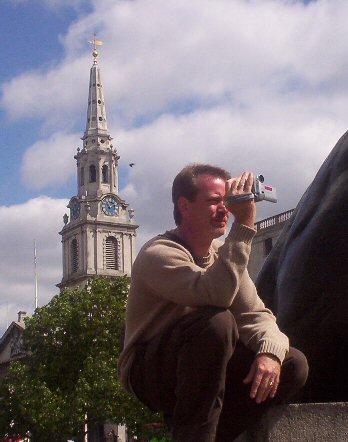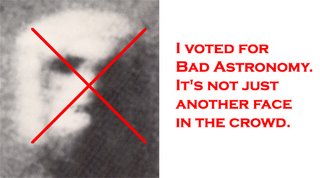How A Theory Begins
Originally posted at the Science, Just Science Forums (where you can see the evolution of the piece) the girls have allowed me to Guest Post this.
Thanks, girls.
Thanks, girls.
How a Theory Begins
By Lou FCD
Back in February, I was navigating my usual morning course of news and science. Every morning with my coffee I enjoy reading about all the things the world was doing while I slept. There’s a very specific, evolving cast of digital characters that parades across my laptop screen. I start with the daily paper, move on to national news, then over to the BBC England page. From June to November, the next stops are the National Hurricane Center and the Satellite photos of the Atlantic. Saving the most interesting for last, I start down a long list of science related websites. The World Wide Web is a vast repository of incredible amounts of brand new science. First on my list is space.com, a great site for daily briefs on what’s going on in the universe.
On this particular morning, I was reading a little bit about the Mars Spirit Rover, which had just arrived at Home Plate. I’m always interested in what those little-guys-that-won’t-quit are up to. Something really struck me that morning, about how science is done, and how that relates (or more properly, how it doesn’t relate) to the Intelligent Design creationism movement.
At issue was the process which formed Home Plate. There were many conjectures about what caused the structures they were seeing. Was this the remnants of a hydrothermal vent? Was it an impact crater formation? Could it have been caused by water erosion? Lots of ideas were being floated.
Two quotes really stood out in my mind. One member of the science team is Larry Crumpler, the Research Curator of Volcanology and Space Sciences for the New Mexico Museum of Natural History and Science in Albuquerque, New Mexico. He said, “"I think the hypotheses for Home Plate have gotten more diverse… In fact, it is a healthy debate within the team right now.”
Steve Squyres is the lead Mars Rover Exploration Scientist at Cornell University. His take on the situation? "But that’s purely conjecture at this point … a working hypothesis. Everything is on the table until we’ve gotten more data down."
Reading the article, I noticed something about the way the science team went about things. First, they saw something interesting from satellite photos. Naturally, the next thing they did was send the rover over to investigate. Once they began getting the data back from the rover, they started developing hypotheses, natural explanations for what may have formed the rocks they were seeing. Then they began discussing and debating each of the various hypotheses. At the same time, they continued to collect data, looking for evidence both for and against various ideas.
Something else about the article I noticed. It’s as much about what wasn’t said, as what was. At no time did any of the various scientists propose hiring a P.R. firm to promote their idea. There weren’t any discussions about how to sneak ideas into high school classrooms. Nobody suggested hiring lawyers to defend their point of view. Not one single scientist just gave up and said that the rocks were just too complex to figure out, so God must have designed them that way. So herein is the crux of the matter. Herein lies the difference between science and Intelligent Design creationism. Herein stands bare the abject vacuity of ideas promoted by the likes of William Dembski and Michael Behe.
So briefly, let’s examine the scientific method of the Mars rover scientists.
1. They saw something interesting from satellite photos.
2. They sent the rover to gather data.
3. They began looking over the data carefully.
4. They began forming hypotheses.
5. They discussed and debated these hypotheses with other knowledgeable scientists.
Next...
6. They continue collecting data.
7. They rethink, reevaluate, reform, confirm or refute their hypotheses.
8. They go back to step 2
9. Sometime WAY down the road, they wind up with a theory.
At no point have any of them:
A. Thrown up their hands and said "Wow, look how PRETTY! We’ll never figure it out, so Godmustadidit"
B. Hired any lawyers.
C. Worked up a grand PR campaign to push their hypotheses.
D. Discussed forcing their hypotheses into high school classrooms.
The proponents of Intelligent Design creationism (or "cdesign proponentsists" as they once referred to themselves) start at step one and simply stop. Then they jump down to A, B, C, and D. In fact, you might say they jump to action E – “All of the above”.
On the other hand, let’s take a look at how actual science gets into a classroom. In 2006 the Shaw Prize in Astronomy, an award for important breakthroughs in scientific research, was awarded to Saul Permutter, Adam Riess, and Brian Schmidt.
Here’s the press release in its entirety.
Saul Perlmutter, Adam Riess, and Brian Schmidt are awarded the Shaw Prize in Astronomy 2006 in recognition of their leadership roles on the two teams that made the remarkable discovery of an acceleration in the rate of the expansion of the universe. Such an effect had been known theoretically since shortly after Einstein applied his theory of general relativity to cosmology, but the general belief, including Einstein’s own assessment, was that the cosmological constant had no basis in reality. Thus, the 1998 announcement of the acceleration of the universe by the Supernova Cosmology Project and the High-z Supernova Search teams electrified the scientific community. The simplest interpretation, that the vacuum has energy even in the absence of matter and radiation, has profound implications that may revolutionize our understanding of the nature of the physical world and its ultimate fate. It is an achievement that is already taught to schoolchildren.
The Shaw Prize in Astronomy Committee
The Shaw Prize Foundation
I’ve emphasized the last sentence to point out how quickly these men’s research found its way into classrooms. In less than eight years, without a single lawyer, P.R. firm, or think tank, these startling findings are being taught in science classes.
This pointedly illustrates that Intelligent Design creationism is a completely different animal than a scientific theory.
Seeing the current state of the theory of the acceleration of the expansion of the universe, and gazing back toward Home Plate, it’s easy to see that this is indeed how a theory begins.












